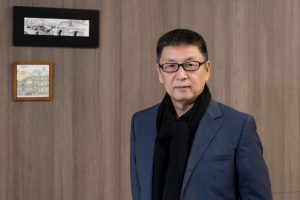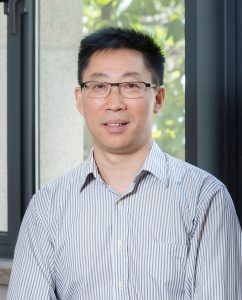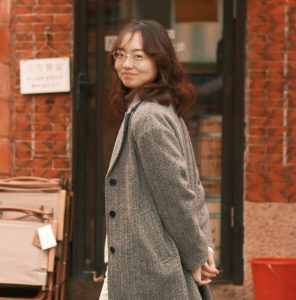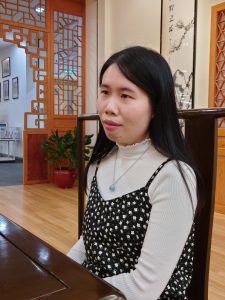Literary translation is a process that requires navigating complex and nuanced cultural differences. This process goes beyond simply pressing a ‘switch the language’ button. Indeed, literary translation is an art of language recreation. In today’s era of digital translation, how do professors of translation studies in the Faculty of Arts and Humanities (FAH) at the University of Macau (UM) impart translation knowledge, cultivate students’ linguistic creativity, and equip them with the essential skills for literary translation? Join us in this article to find out more.
Literary translators: Crafting art on a tightrope
‘Linguistic creativity is a fundamental element in literary translation,’ says Yao Jingming, professor in the Department of Portuguese, drawing from his extensive experience in translation and teaching. According to Prof Yao, unlike the translation of legal contracts, business documents, and press releases, which typically follows conventional methods, literary translation is an adventure in itself, similar to finding beauty in the fog. He explains, literary translators must remain vigilant all the time and have the courage to break away from conventional language usage, so as to create a space rich in poetic imagination for readers. He elaborates this process with an analogy: ‘Literary translators are similar to tightrope walkers. They travel between the original text and the translation. Throughout this meticulous process, they carefully balance the need to remain faithful to the original while using their creative writing skills to convey the literary landscape in the target language.’
The allure of literature lies in its ability to transcend time and space. When translating the classical Chinese story collection Strange Tales from a Chinese Studio (聊齋志異) into Portuguese, the faculty and students of the Department of Portuguese dedicated significant effort to introducing Chinese fantasy literature to Portuguese-speaking audiences. This task involved skillfully translating metaphors, symbols, and cultural references such that translators had to liberate themselves from the cultural constraints of the original text while preserving its literary characteristics. Prof Yao says, ‘The biggest challenge in translating from Chinese into idiomatic Portuguese is freeing oneself from the Chinese ways of thinking. As learners of a foreign language, this is something we strive to overcome throughout our lives.’
In one of his creative literature translation classes, Prof Yao invited renowned poet and Swedish translator Li Li to UM to share his translation experiences with students. Prof Yao emphasises that the essence of literary translation—whether it is into Portuguese or Swedish—remains consistent. Translation is fundamentally a process of recreation, especially in regards to poetry. Depending on the context, translators have the freedom to rewrite the poetry in different ways.
So, how is it possible to enhance students’ creativity? Prof Yao believes this process begins by strengthening their sensitivity to language. As he explains, ‘People’s language sense varies. Some are born with it, while some others need to make special efforts to develop it. As teachers, we should use every possible method to awaken students’ sense of language. Once their language sense is awakened, creativity will naturally follow.’ Prof Yao offers the English name of the Macau Literary Festival, ‘The Script Road’, as an example to illustrate this point. The festival’s Chinese name, ‘雋文不朽’ (literally: immortal writing), was created by a UM alumnus. Prof Yao emphasises, ‘Only those with a keen sense of language can create new words and expressions like this.’
Translation in the digital era
The integration of disciplines has enabled the field of translation to break through traditional boundaries, positioning it at the forefront of digital humanities. At UM’s Centre for Studies of Translation, Interpreting and Cognition, big data technology is used to explore the translation of literary classics. Prof Li Defeng, director of the centre and associate dean of FAH, explains the technology’s role in translation, ‘Through big data analysis, we can examine translation patterns, language similarities, translation strategies, and the individual styles of translators. For example, by analysing the English translations of Dream of the Red Chamber, we can study the use of different words and methods by translators, as well as the formation of their unique translation styles. Understanding these can help us enhance students’ translation skills and creativity in teaching.’
The emergence of intelligent translation tools has relieved translators from the task of drafting translations in the initial stages, allowing them to focus on enhancing the quality of their work. This shift has also increased the requirements of students’ language skills, translation skills, and intercultural competence. In response, Prof Li ensures that his translation teaching keeps pace with the changing landscape. In addition to reinforcing the teaching of theoretical knowledge, he focuses on cultivating students’ creativity and transferable skills. He assigns students a project which requires them to work in teams to translate a work of literature and art and then stage it. According to Prof Li, this project not only tests students’ translation skills, but also helps them develop their transferable skills in interpersonal communication, teamwork, time management and problem-solving, and put them into practice.
Prof Li has implemented this innovative teaching method for three years and it has gained popularity among students. Last year, a group of students translated the theme song of the movie Mulan and performed it on stage. By revisiting the story of the legendary folk heroine, they discussed gender issues concerning women in the modern workplace, which left a deep impression on Prof Li. He says, ‘We aim to provide opportunities for students to expand their creativity and transferable skills, and focus on more than just translation. When a translated script is staged, translators also need to make use of their body language and consider their interaction with other actors. Many changes can occur during this process, which is what authentic translation is about.’
Transformations in translation
Over the years, UM has nurtured numerous students of language and translation, who have achieved significant accomplishments in their respective fields. You Yupin is one such example. She graduated from the Department of Portuguese in 2020 and is currently a Portuguese teacher in the College of Western Languages and Cultures at Sichuan International Studies University, where she teaches Chinese-Portuguese translation and interpreting. You has published several translated works, including the Chinese translations of Objeto Quase and Morreste-me. Despite being a university teacher, You still reminisces about Prof Yao’s classes at UM. She remembers, ‘Time flew by in our class. We often didn’t realise a session had passed after starting a discussion. Prof Yao had a remarkable ability to clarify intricate details in translation, whether it was about ambiguities in the original text or finding the appropriate translation. He always had a solution.’
For You, translation requires continuous decision making to achieve a better result. When she undertook the task of translating Objeto Quase, a collection of short stories by Portuguese writer and Nobel Prize in Literature laureate José Saramago, she spent considerable time pondering the Chinese title of the book. She recalls, ‘The literal meaning of the Portuguese title is “almost an object”. Initially, the publisher suggested a tentative Chinese name meaning “quasi-object”, but it was not a satisfactory name. Later, Prof Yao helped create the name “The Story of Changing Objects” (變物記), and I thought it was a good name. But after further discussions with the publisher, we finally decided to use “物托邦” (object-topia). It can be said that each ‘transformation’ of the translation symbolises the evolution of the translator’s understanding of the text.’
No shortcuts in mastering translation
Literary literacy forms the cornerstone of a translator’s language skills. Pansy Lau, a 2007 graduate of the Department of English, is a member of Macao Outersky Poet Association and the author of the poetry collections Leeway for the Fragrance and Retrograde. With nearly seven years of experience as a Chinese-English translator specialising in cultural, artistic, business, tourism and hospitality translations, Pansy attributes the solid foundation of her literary creations and translation career to her four years of undergraduate studies at UM. She explains, ‘The Department of English allows students to take literature and translation as elective courses. These two fields actually complement each other. I still remember how I immersed myself in reading those literary introductions and classic masterpieces—which were as thick as bricks. But this kind of training is very important. It has not only expanded my vocabulary, but has also honed my sense of language, which, in turn, directly enhances my ability to accurately understand the original text.’
Recently, Pansy won a merit award in the open category of translated literature at the 50th Youth Literature Awards in Hong Kong, making her the only winner from Macao. She notes that in literature works, it is not unusual to see a sentence spanning five lines, which can be difficult to understand. The ability to clarify the context and restructure sentences to make the translation comprehensible and fluent relies on the translator’s language sense—a skill that takes years to cultivate. Therefore, in Pansy’s opinion, there are no shortcuts in learning foreign languages or mastering translation. She emphasises, ‘Whether it is literary creation or translation, continuous reading and consistent practice are crucial. Only through these efforts can one improve their writing skills and build a robust body of knowledge.’
Text: Kelvin U
English translation: Bess Che
Photos: Editorial Board, with some provided by the interviewees
Source: My UM Issue 133




